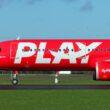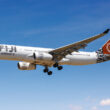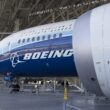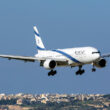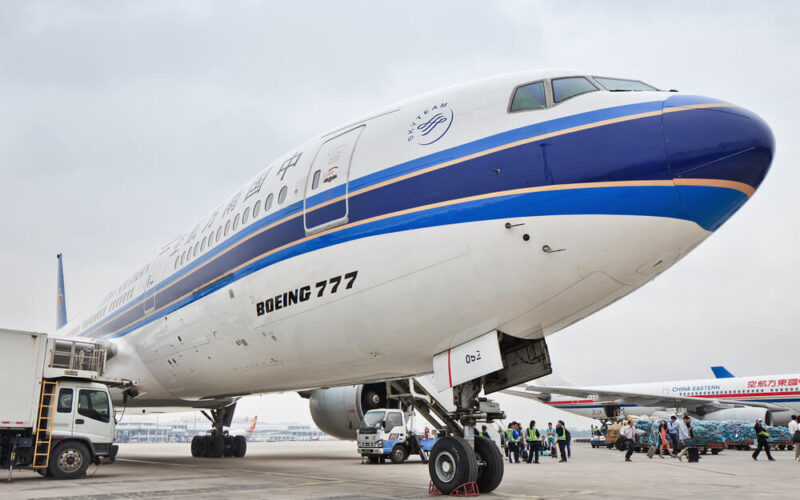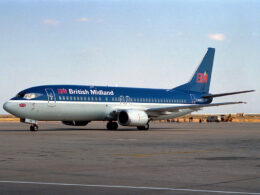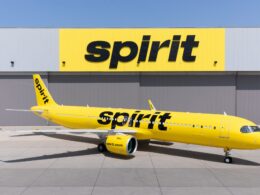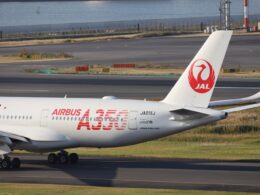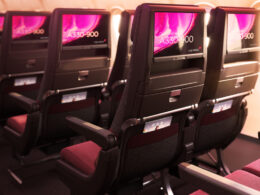On July 20, 1997, China Southern Airlines Boeing 777 departed Guangzhou Baiyun International Airport (CAN) in China towards Los Angeles International Airport (LAX) in the United States. At first glance, the flight should have not marked anything significant. It was neither the inaugural flight of a Boeing 777-200ER nor China Southern Airlines (ZNH) first flight with the Triple Seven.
But it marked the beginning of a slow and painful death of the quad-engine jets, namely the Airbus A340, the yet-officially announced at the time Airbus A380 and the Boeing 747.
Extended twin operations
Extended Range Twin Operations (ETOPS) rules define how far from a diversion airport can an aircraft travel on its given flight route. For example, aircraft were allowed to route their flights 60 minutes away from a potential diversion airport, as the shaky reliability of piston engines in the 1950s swayed regulators from providing more flexibility to airlines.
In 1953, the Federal Aviation Administration (FAA) enacted the 60-minute rule. The rule was flexible and carriers could apply for special approval from the FAA to fly on routes that were not 60-minute rule-compliant. The approval depended on several factors, including the type of aircraft an airline would be using.
The International Civil Aviation Organization (ICAO) disagreed and issued its own recommendations, allowing twin-engine aircraft operations with a diversion time of up to 90 minutes. Many airlines that were not based in the United States used the recommendation to shorten flight times.
In 1985, the FAA relaxed its rules and allowed twins to operate flights with a diversion time of up to 120 minutes. That allowed airlines to offer a more diverse network of routes between North America and Europe.
“ETOPS made it possible for this new generation of airplanes to use its inherent range capabilities to reshape the North Atlantic market,” stated Boeing when the company talked about the history of ETOPS in its magazine, Aero.
The larger distance between North America and the main gateways in Asia, including China, were still out of reach for single-aisle aircraft. Even Hawaii, a very popular leisure destination for mainland Americans, was unavailable to the Boeing 757 or the 767, as routes from the Pacific island to the mainland were too far off for the 120-minute rule.
On December 30, 1988, the world opened up: the FAA issued Advisory Circular (AC) 120-42A, allowing airlines to operate ETOPS 180 flights from an adequate airport.
Upgrading to the 777
In June 1995, the Boeing 777 officially entered commercial service with United Airlines. The Boeing 777-200 could butt heads with the Boeing 747-200 or the -100, as it had very similar characteristics, yet consumed less fuel. Naturally, having two engines less to maintain, made the cost-advantage huge.
The Queen, unfortunately, is looking at its slow demise. With numerous airlines retiring the passenger version, and the rumors about the production of the 747 coming to an end, the Triple Seven was possibly the first product in Boeing’s lineup to slowly begin the process of undermining the Queen’s service life.
The situation at Airbus was no different. The European manufacturer predicted a booming hub-and-spoke model. But the predictions were not fruitful, as it only managed to sell 251 firm orders for the Airbus A380. The A340 also lagged behind the 777 and its own A330. Airbus’ first quad-engine aircraft only amassed 377 orders before the manufacturer ceased the production of the A340 in November 2011.
“China Southern is once again playing a leadership role as a pioneer in the aviation development of Asia,” stated Chet Ekstrand, Boeing’s former Vice President. Upon its landing in LAX, the China Southern Boeing 777-200ER, named -200IGW (increased gross weight) at the time, broke a few records. It was the first Triple Seven and the first twin-engine to cross the Pacific Ocean and fly to the U.S. from China.
“We’re quite optimistic that this is the beginning of a lot more of this sort of ETOPS operation with the 777 across the Pacific,” said Paul Fang, the former director of international sales in China for Boeing.
This also marked the beginning of a slow, painful and eventual demise of quad-engine aircraft, as the operational limits for twin-engine aircraft were removed and technology only moved forward. Now, such globetrotters as the Boeing 787 Dreamliner or the Airbus A350 have pushed the limits even further. The yet to be certified Boeing 777X will, possibly, push those boundaries even further.

